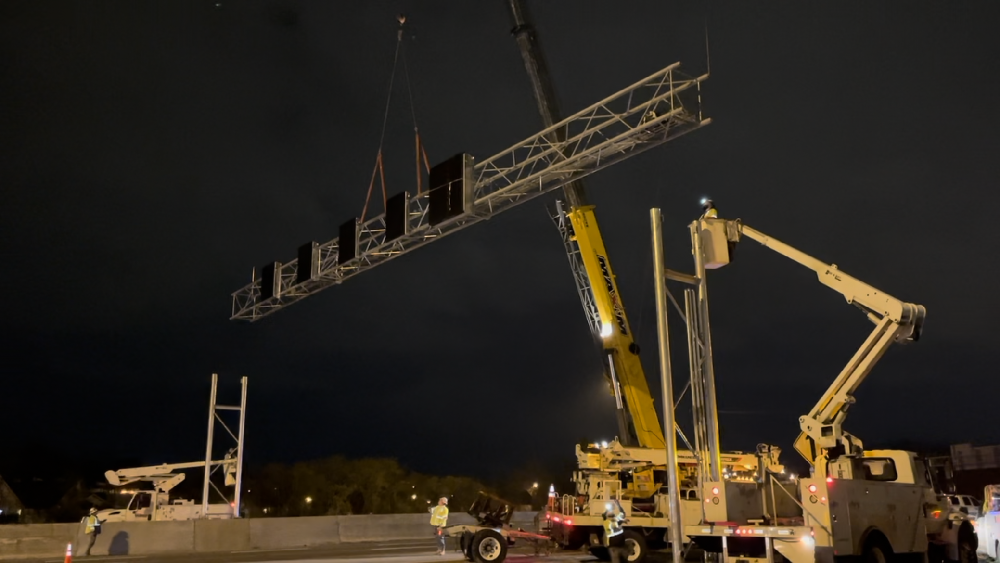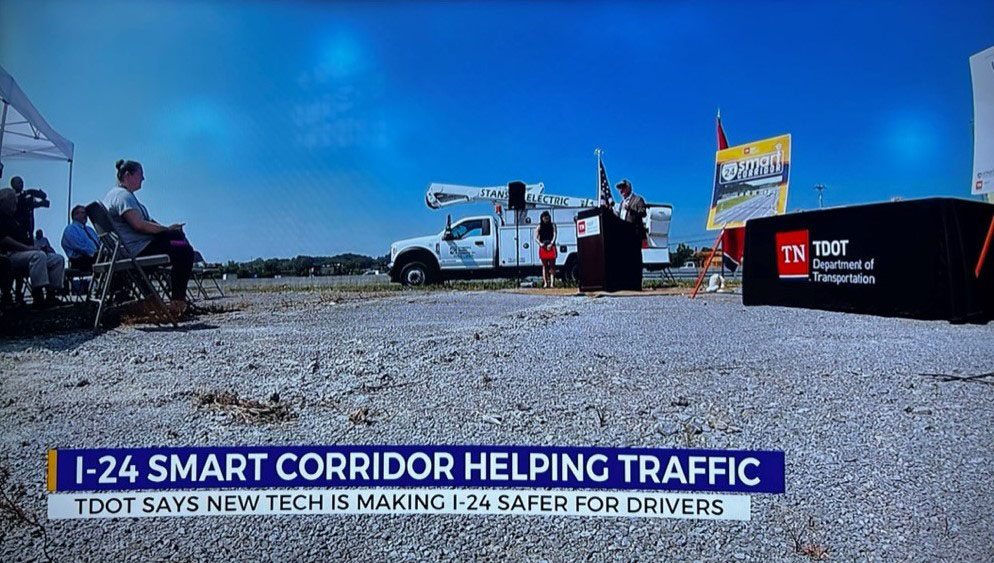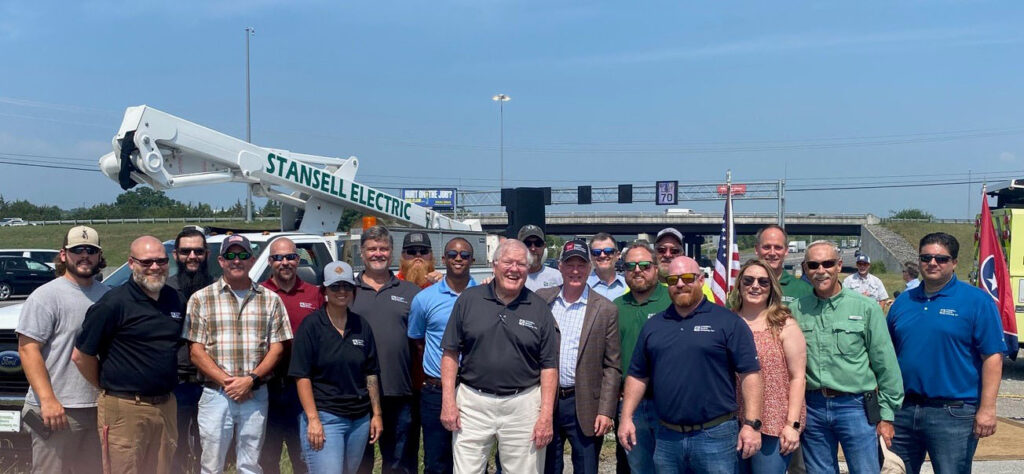I-24 Smart Corridor Phase 2 project
LOCATION
I-24 through Davidson and Rutherford Counties
The I-24 Smart Corridor Phase 2 project was a significant undertaking aimed at improving traffic management and infrastructure along the I-24 corridor, encompassing the areas of Davidson and Rutherford counties. This report outlines the challenges, progress, and achievements of the project, highlighting its key components and benefits to traffic management.
Collaboration Efforts:
The success of the I-24 Smart Corridor Phase 2 project heavily relied on collaboration among various stakeholders. The project team worked closely with TDOT, the City of Lavergne, NDOT, the Town of Smyrna, and the City of Murfreesboro, along with industry partners such as Vulcan Materials and Arcadis. Regular meetings were held to discuss project milestones, resolve issues, and ensure efficient coordination among all parties involved. This collaborative approach enabled effective decision-making and the seamless implementation of the project.

Communication Technology and Software:
To achieve the project’s objectives, the implementation of new technologies and software was crucial. The project team incorporated advanced traffic management systems, including real-time monitoring and adaptive signal control, to optimize traffic flow along the corridor. Multiple communication technologies such as CCTV cameras, fiber optic networks, and wireless sensors were deployed to gather data and enable seamless communication between devices and the central control system. This integration of communication technology and software significantly enhanced the project’s ability to monitor and manage traffic conditions efficiently.
- 67 Lane Use Gantries
- 269 Lane Control DMS Signs, 67 Shoulder Signs
- 10 DMS Walk-In Signs
- 14 Emergency Pull Off Detection Systems
- 31 CCTVs
- 60 Radar Detection Systems
- 130 Network Switches
- 254 Advanced Radar Detection
- 135 Vehicle Detection
- 2 Network Hub Buildings
- 226,750′ 144F Fiber

Key Components and Benefits of Traffic Management:
Several key components were implemented as part of the I-24 Smart Corridor Phase 2 project:
- Adaptive Signal Control System (ASCS): The ASCS dynamically adjusts signal timing based on real-time traffic conditions, improving traffic flow, and reducing congestion. This system has led to significant reductions in travel time and improved overall traffic efficiency.
- Incident Management System (IMS): An integrated IMS was implemented to quickly detect and respond to incidents along the corridor. This system enables real-time incident reporting, coordination with emergency services, and timely diversion of traffic to minimize disruptions.
- Dynamic Message Signs (DMS): DMS displays real-time information to drivers, providing important updates on traffic conditions, incidents, and alternate routes. These signs contribute to better driver awareness and decision-making, improving overall safety and reducing congestion.

Challenges Faced During Construction:
The I-24 Smart Corridor Phase 2 project encountered several challenges during its construction phase. These challenges include:
- Pandemic-Related Disruptions: The project commenced in February 2020, coinciding with the onset of the COVID-19 pandemic. Delays in material procurement and cost increases due to global supply chain disruptions posed significant challenges. Nonetheless, close monitoring and coordination with suppliers helped mitigate these obstacles and ensured the timely delivery of project components.
- Traffic Management: Effective traffic management during construction was crucial to minimize disruptions to commuters. Night work and extensive planning were employed to minimize delays and maintain traffic flow during peak hours. Traffic control measures were implemented to redirect vehicles and ensure worker and commuter safety.

The I-24 Smart Corridor Phase 2 project has been a resounding success. Despite the challenges faced during its implementation, the project team demonstrated resilience and dedication, leading to the integration of new technologies and over 3,000 devices into the system. This resulted in improved traffic management, reduced congestion, and enhanced overall traffic safety. The collaboration with multiple stakeholders, the integration of communication technology and software, and the overcoming of construction challenges are testaments to its success. The I-24 Smart Corridor Phase 2 project stands as a model for efficient infrastructure development and traffic management, setting a positive precedent for future projects within the region.
The I-24 Smart Corridor project has had its share of challenges, being the first of its kind to be implemented in Tennessee. Stansell stepped up to the plate, partnering with TDOT and many other stakeholders, to overcome these challenges and ultimately deliver this project to benefit the citizens of Tennessee.
– Clint Carpenter, TDOT
